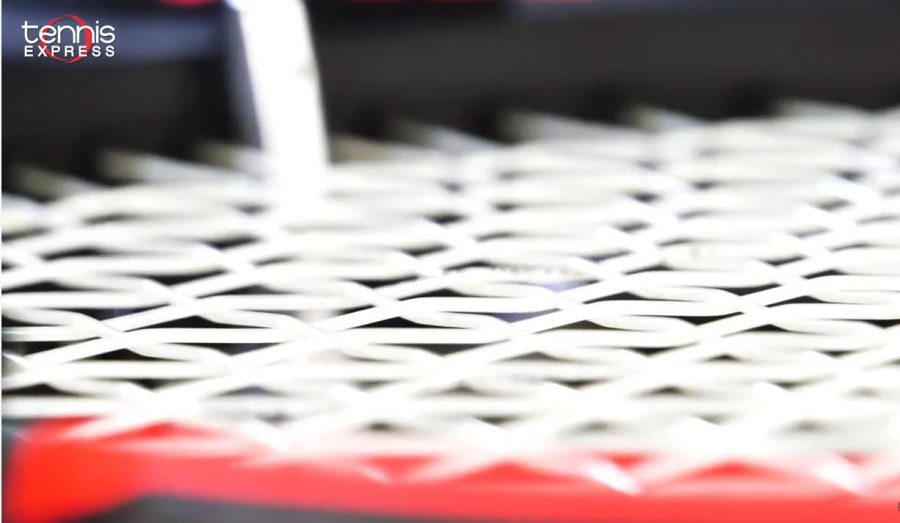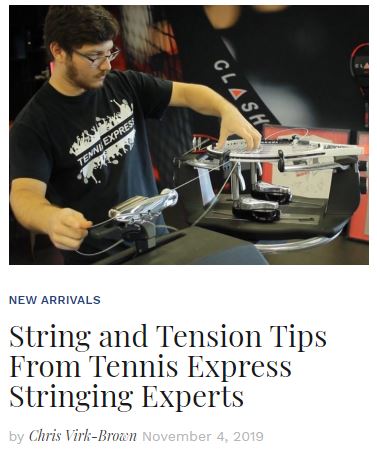In my continuing days of playing and stringing, I have experience with a large number of the strings on the market today. To me, it is interesting that out of the hundreds of strings available, most people tend to stick to a select few well known ones. Some examples of these are Wilson NXT, Luxilon ALU Power, Babolat RPM Blast, and Gamma Synthetic Gut w/ WearGuard. While these four strings cover a wide range of playing characteristics, there are so many more, vastly underrated strings that are made. By far the fastest growing string construction is in the polyester based realm, which is the focus today.
For anyone that has watched tennis on TV in the last few years, you have heard about how all of the pro players have moved to polyester strings, whether it be Luxilon, Babolat, Tecnifibre, or even Solinco. The announcers always mention how much the string helps their games, allowing them to take huge swings and create more spin than ever before. Unfortunately, in my opinion, the announcers are doing the average player a great disservice by not telling the full story of polyester strings. So the subject of this entry is to discuss polyester strings more in depth to determine if they are truly the right option for you and your needs.
My Experience with Polyester Strings
As some background, I have been playing tennis for 12 years, and have used polyester in the past. Occasionally, in present day, I use it in hybrid setups. That’s mainly due to a bad case of tennis elbow which prevented me from playing seriously for about 6 months. Although I am healed, I’m still always susceptible to re-injuring my elbow. Despite the common misconception that polyester strings lead to tennis elbow, I can use them, but it’s because I have become smarter about how I use them.
Why Polyester Strings?
 So what is it about polyester strings that everyone likes? Many of the players that come in asking for polyester are asking for something durable, and that is the immediate response. That is only part of the story though, as string life can be measured in two ways. The one that the average player knows is essentially a measure of how long it takes until the string snaps, whether it is two weeks or ten months. The other measure of string durability, and the more important one, is the effective string life. In other words, how long the string is in the racquet before it starts to lose its ideal playing properties. These two numbers can vary greatly, and if you look at the stringing patterns of professional players, it is even more obvious. How many times have you had your racquet strung, and it felt great for about a week only to feel lifeless after that? This is what I mean by effective string life. For me, a string like Tecnifibre X-One Biphase will have a usable life of around 8-10 hours of hitting, and breaks around the 10 hour mark. On the other hand, a string like Luxilon Big Banger Original has an effective life of 6-8 hours, but takes 30 hours to break. In this case, which is better? Would you rather have a string that plays great for the entire life and breaks earlier, or a string that takes longer to break, but feels terrible for 70% of the time?
So what is it about polyester strings that everyone likes? Many of the players that come in asking for polyester are asking for something durable, and that is the immediate response. That is only part of the story though, as string life can be measured in two ways. The one that the average player knows is essentially a measure of how long it takes until the string snaps, whether it is two weeks or ten months. The other measure of string durability, and the more important one, is the effective string life. In other words, how long the string is in the racquet before it starts to lose its ideal playing properties. These two numbers can vary greatly, and if you look at the stringing patterns of professional players, it is even more obvious. How many times have you had your racquet strung, and it felt great for about a week only to feel lifeless after that? This is what I mean by effective string life. For me, a string like Tecnifibre X-One Biphase will have a usable life of around 8-10 hours of hitting, and breaks around the 10 hour mark. On the other hand, a string like Luxilon Big Banger Original has an effective life of 6-8 hours, but takes 30 hours to break. In this case, which is better? Would you rather have a string that plays great for the entire life and breaks earlier, or a string that takes longer to break, but feels terrible for 70% of the time?
This isn’t to say that polyester doesn’t have its place. There are plenty of players that break strings a lot faster than myself, and there are plenty of very skilled collegiate or high school players that rip through any string in a matter of hours. Even for me, it has earned a perfectly acceptable spot as my cross string. It’s not that I hate polyester strings. I personally do not care for the feel of a full polyester stringbed as it seems lifeless, even at low tensions.
Myths About Polyester Strings
Now I want to take a few minutes to discuss one of my pet peeves when it comes to TV announcers. It seems like almost every single telecast involves something about Rafael Nadal’s string, or really any player’s string, and they always mention only polyester based strings. While it is true that Luxilon is far and away the most popular manufacturer among the pros, the problem is that the announcers simply talk about the benefits. They list these benefits as more spin, greater control, longer durability, etc. etc. What they don’t tell you about is some of the most important aspects like what tension they are stringing at, how often they are stringing, and things like that. When an average 3.5 level player comes carrying a small headed, dense-patterned racquet, and requests Luxilon strung up at 62 pounds, there’s a good chance that this is not the appropriate string set up. An example like this is an inappropriate use of polyester for multiple reasons. One is that the string is probably not suited for the player, and given his racquet choice most likely the player will keep the string in the racquet until they finally break months down the line. Unfortunately, what you don’t hear on TV is that strings, and especially many polyester based strings, lose their tension extremely quickly. This can mean that while you got your racquet strung at 62 pounds, the tension the next day will have already dipped to the mid 50s, and could be in the 30s or 40s within a week.
Tension Range and Restringing

Back to pro racquets, I think many of you would be surprised to know how low some of them actually string. For example, Nadal strings around 55 pounds, Roger Federer around 46/43 pounds, and Fernando Verdasco around 50 pounds. In fact, the days of pros stringing at 70 pounds are largely gone, as many now do not venture above 60 pounds due to the new strings.
So how often does the typical player restring? Many will answer, “When they break.” This is what leads to problems as the elasticity and playing properties of the string are typically diminished by then. Not all of us have access to free string and can restring every single day like many professionals. But we can certainly be smarter about how often we choose to restring. I used to be one of those players that would string with full poly and restring in 3 weeks when they broke. It turns out that this was wrecking my arm. The playability had deteriorated so much by the end, that it was causing problems with my game. This is why I now choose to play with a string that breaks right around the same time that the playability takes a drastic drop. This allows me to effectively get the maximum amount of playable life, without feeling bad about cutting string each week.
Testing Your String’s Lifespan
The best way to know whether or not you get the most playable life from your string is to consider this situation. You are playing one night and you break a string. After getting it restrung at your normal tension with your normal string does the new string job feel amazing, or does it feel just like your stringbed always feels? Chances are that if it feels vastly better after stringing, then the string you broke was long past its best life. Strings should be thought of as the engine to your car, and it is important to find the right option for your particular needs. Whether your needs be maximum durability, comfort, spin, or power, there are hundreds of strings available and it’s possible to find the proper selection.
I’m sure there are plenty of players that want to be like Nadal, but are they hurting their game and development by buying into the polyester hype? I would predict that a number of them are. So please consider that not every player should be playing with Luxilon ALU Power or Babolat RPM Blast, and instead focus on their personal needs. If you are a former sufferer of tennis elbow, please do not use a polyester string just because it is durable. It is also important to remember that a string can need replacing, even if it has not broken. While polyester strings are definitely the right choice for certain players, I would like to implore all users of polyester to really assess why they choose this string.
For More:
Subscribe for More!
We send periodic updates detailing our recent posts.





